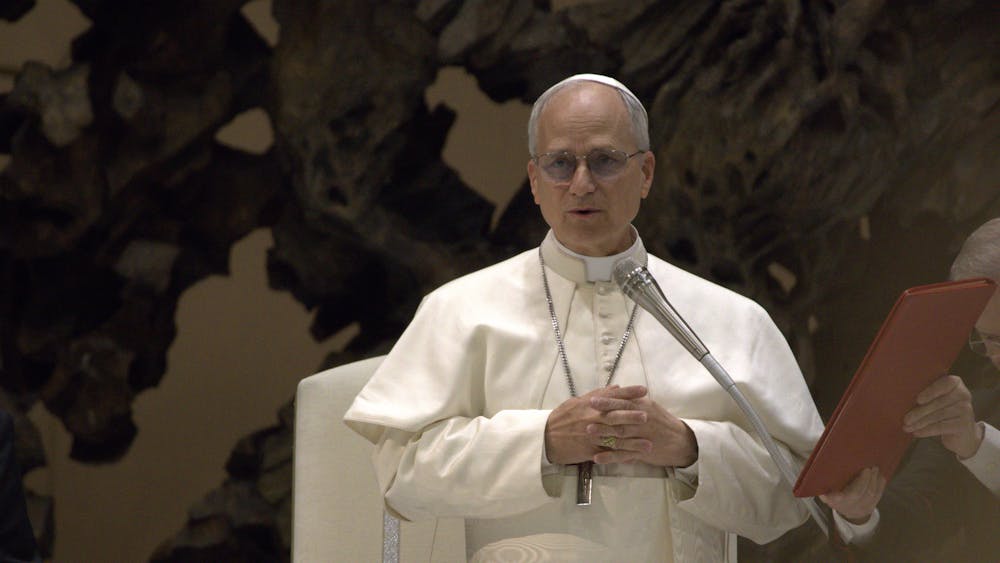Editor’s note: Throughout the 2018 midterm election season, The Observer will sit down with various student organizations and professors to discuss political engagement and issues particularly pertinent to students. In this sixth installment, the leader of “Converge” discusses initiating a new program meant to facilitate political conversations on campus.
As campaign rhetoric across the nation continues to escalate in the lead-up to the 2018 midterm elections, some students at Notre Dame are seeking to build understanding across the aisle through “Converge,” a new program that matches up liberals and conservatives to facilitate a discussion about political beliefs.
Junior Steven Higgins, who is leading the program at Notre Dame, explained that Converge is more focused on the belief-forming process than specific beliefs themselves.
“People take a political test, where it’s asking these questions based on, [for example], ‘Are you pro-choice? What do you think about gun rights?’ And we are able to take that information and put them on a liberal-to-conservative scale,” Higgins said. “Then we take the most conservative, most liberal and people on either side of the spectrum, and we match them up for some conversation. This is based on their availability, of course, but then they sit down and talk more so about the fundamentals of their beliefs, how they came to possess the beliefs that they do then say, what’s their opinion on health [care] policy. It’s less so of a debate and more of a genuine conversation about how they developed the beliefs that they have.”
In order to create a list of matches, Higgins said all responses to the survey were put into a spreadsheet. Respondents were ranked on a scale of one to five, with one representing the most liberal and five representing the most conservative. More conservative individuals were paired with more moderate liberals, and vice versa.
There was a perfect split between ideologies in terms of responses, Higgins said.
“It’s very ironic,” he said. “We had a perfect amount of matches on the liberal and conservative side. That’s just bizarre to me. When we cut it and threw both sides into two columns and I was like, ‘Oh, there’s perfect amount!’ … I think that’s really telling about the people who wanted to come out and take this quiz. Overall, it was very evenly split. We were looking at the aggregate data from the questions on the one-to-five scale, and it was almost universally kind of even across the board.”
Converge has been run twice at the University of Virginia, and once at another school in Kansas, Higgins said. Notre Dame’s Converge session will be the largest conducted so far, with 154 people participating. It is being run in coordination with all major political organizations on campus, including student government, BridgeND, College Democrats, College Republicans and Young Americans for Freedom.
BridgeND ran a pilot of Converge at a recent meeting, and this past Thursday there was a kickoff event where the president of College Democrats and College Republicans simulated a conversation. Fifty people, or about a third of the total respondents, attended this event, which shows “the energy and excitement” about Converge, Higgins said.
Higgins also noted the program will be taking place late in the election cycle, when both parties start deploying more negative advertisements in an attempt to fire up their bases. He said he hopes Converge is able to demonstrate large-scale agreements, in addition to building understanding.
“This is a very important time to have these conversations to try not to fall into this overwhelming partisanship,” he said. “I’m hoping it’s going to go really well. When we were looking at how partisan everybody was, there were not very overwhelming partisan differences. There were definitely partisan differences and people pretty far on the scales, but they were still more moderate than I was expecting, at least. The extremes were not as large as I was thinking. It seems that there’s a lot of people who have more moderate views on certain issues. … That gives me hope in the fact that when they’re sitting down and having these conversations, there might be something they agree on. Having that initial agreement … makes it a little bit easier.”
Read More
Trending









